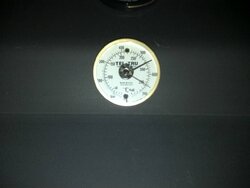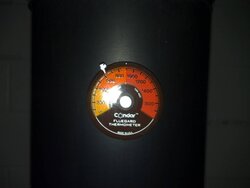It is relatively warm here as we were once more into the 40's. When I got home though I got the stove going. Not too much though so I put in 3 relatively small splits. It took off right away and I engaged the catalyst at 250 stove top and 400 flue. Then I got a couple things done and got on the forum. Kept getting a bit too warm but just thought it was because maybe the temperature outside was not going down as there is a storm approaching.
I've heard many tell about the explosions and we've experienced a few over the years. Today I heard something faint as if something may have fell or something hit the house. Naturally though, I go first to the stove. Wow! It was hotter the closer I got. There was some flame but not a lot. Stove top temperature was 690. Whoops. Approaching the top line so I opened the draft slightly and it cooled down fast. That is not a typo if someone wonders. Yes, I opened the draft a bit and the stove cooled.
The amazing thing is that the splits were rather small but still the stove reached that temperature. This is the 6th day with the new SS cat.
I've heard many tell about the explosions and we've experienced a few over the years. Today I heard something faint as if something may have fell or something hit the house. Naturally though, I go first to the stove. Wow! It was hotter the closer I got. There was some flame but not a lot. Stove top temperature was 690. Whoops. Approaching the top line so I opened the draft slightly and it cooled down fast. That is not a typo if someone wonders. Yes, I opened the draft a bit and the stove cooled.
The amazing thing is that the splits were rather small but still the stove reached that temperature. This is the 6th day with the new SS cat.




